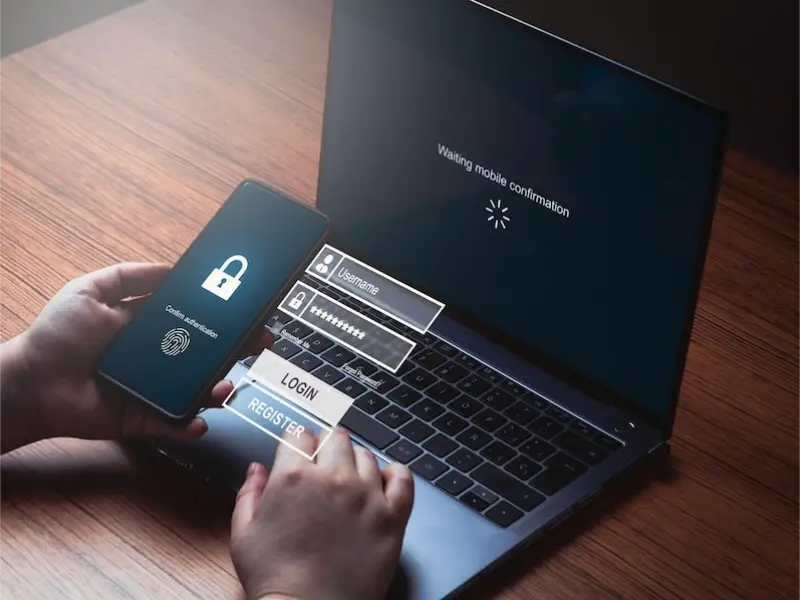- Multi-factor authentication enhances security by requiring users to provide multiple forms of identity verification, significantly reducing the risk of unauthorised access.
- It helps protect against various cyber threats, including phishing, password theft, and malware attacks, by adding extra layers of authentication.
- MFA is essential for compliance with data protection regulations and industry standards, ensuring that organisations meet legal requirements and maintain the trust of their stakeholders.
Multi-factor authentication (MFA) refers to a multi-step login procedure where users are prompted to provide additional information beyond just a password. MFA provides an extra layer of security, especially in cases of password compromise. It verifies user identities, ensuring secure access for authorized individuals.
Prevention of identity theft
In today’s digital landscape, password theft is a prevalent threat, with cybercriminals employing various techniques to steal credentials and gain unauthorised access to private accounts. Multi-factor authentication mitigates the risk of identity theft by requiring users to provide additional verification factors beyond passwords. For example, even if a hacker manages to obtain an employee’s password through phishing or malware, they would still need to provide another form of authentication, such as a fingerprint scan or a one-time code generated by an authenticator app, to access sensitive data.
For instance, The cyber risk assessment experts at Cyble discovered a hacker selling stolen Zoom credentials at dirt-cheap prices — and in some cases giving them away for free. Cyble purchased more than 530,000 on an underground hacking forum for next to nothing. Several of the company’s clients were among the stolen credentials, which also included personal meeting URLs and Zoom host keys. Cyble reached out and confirmed that the credentials were indeed valid.
Also read: What is the WSO2 identity server?
Prevention of weak passwords
Despite efforts to promote password security, many users still use weak or easily guessable passwords, putting organisational data at risk. Multi-factor authentication addresses this vulnerability by requiring additional verification factors, making it much harder for attackers to gain unauthorised access. By combining something the user knows (password) with something they have (e.g., a fingerprint or a security token), MFA enhances security and reduces the likelihood of successful cyberattacks.
According to NordPass’s password study, passwords like “123456”, “password” and “qwerty” are still currently among the most commonly used passwords around the world. By implementing MFA, organisations can mitigate the risk posed by weak employee passwords and strengthen their overall security posture.
Mitigation of unmanaged devices
With the rise of remote and hybrid work models, employees often use personal devices and unsecured internet connections to access organisational networks. This introduces vulnerabilities that cybercriminals can exploit to gain unauthorised access. Multi-factor authentication mitigates this risk by requiring additional verification factors, regardless of the device or network used for access. MFA provides an additional layer of security, protecting against unauthorised access attempts from compromised devices or networks.
Also read: What are two major concerns regarding IoT devices?
Enhance overall security infrastructure
While anti-virus software and firewalls play a crucial role in cybersecurity, they are ineffective if attackers gain access through stolen credentials. Multi-factor authentication complements existing security measures by requiring additional verification factors, preventing attackers from bypassing other security controls. By implementing MFA, organisations can enhance the effectiveness of their cybersecurity infrastructure and detect unauthorised access attempts more effectively.
Compliance with data protection regulations
Many industries are subject to stringent data protection regulations that require organisations to implement robust authentication measures. Multi-factor authentication helps organisations comply with regulatory requirements, such as SOX for financial services and HIPAA for healthcare transactions, by ensuring secure access to sensitive data and systems. By implementing MFA, organisations can demonstrate compliance with regulatory standards and mitigate the risk of data breaches and regulatory penalties.

